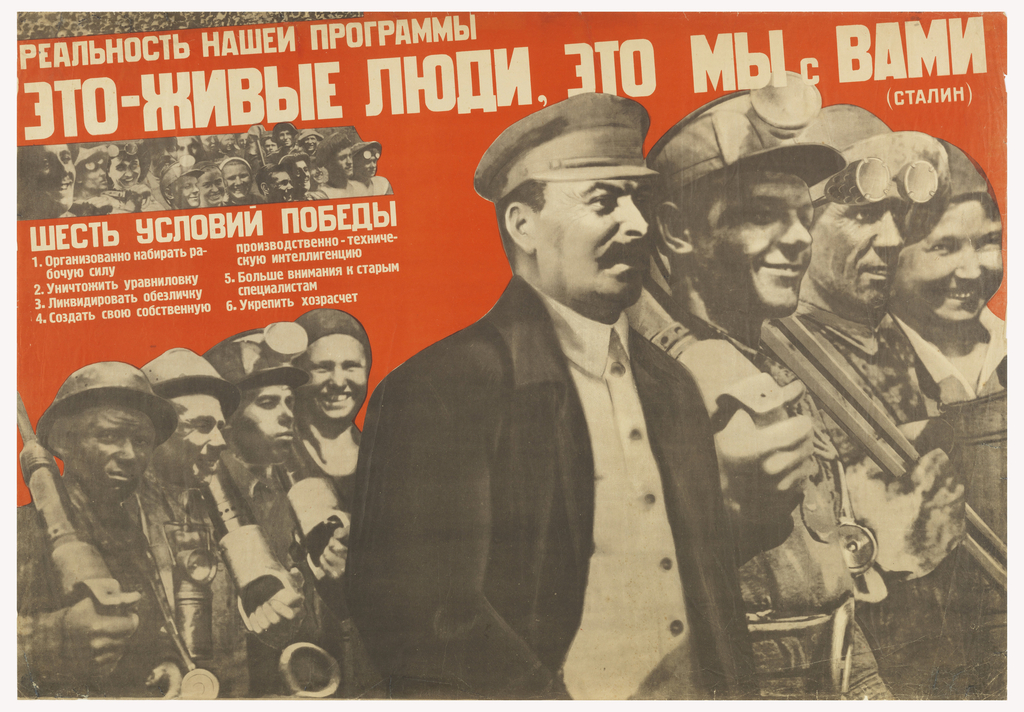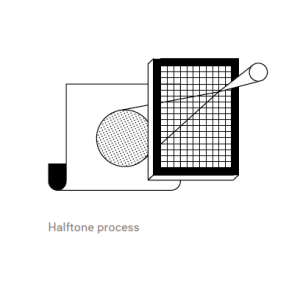Although photography was invented in 1839, its impact on poster design remained relatively minor until the late nineteenth century, as traditional lithography and letterpress are incapable of reproducing shades of gray. A sea change in poster design arrived with the advent of the halftone process, which emerged fully in the 1880s. Halftone mimics the appearance of continuous tone and shading by creating a grid of dots that vary in size and spacing. A halftone photograph was typically cheaper to produce than a drawing, and it rapidly became the primary mode of illustration for newspapers and the burgeoning magazine industry. Halftone blocks could be printed alongside type in the letterpress process, allowing type and image to be printed simultaneously.
In Soviet Russia, the drive toward a utopian culture for the masses fostered an interest among artists and designers to embrace modern technology as part of their aesthetics. Gustav Klucis was among the most influential graphic designers to emerge during this period. He is particularly notable for his sophisticated use of politically charged photomontage, a technique that uses photographic elements to make a composite image. While his work in the 1920s used photomontage in a dynamic, disruptive way, his work in the early 1930s shows the pressures of Stalinism and the new visual regime of social realism. For his 1931 poster The Reality of Our Program . . . Six Conditions for Victory, Klucis tried to negotiate the supreme power of the leader with the strength of the proletariat through photographic manipulation. One mockup of this poster shows Stalin much larger than the masses, who play a more subordinate role. However, in the printed poster, Klucis chose a more egalitarian portrayal, reducing Stalin to the same scale as the marching coal miners. The final poster represents Stalin in his ascendancy, accentuating his human and comradely characteristics. He strides along next to the phalanx of miners in an overcoat and cap as a man of the people. Although Klucis did not invent photomontage, his use of the technique highlights the graphic potential of halftone reproduction when combined with lithography. Klucis’s limited color palette—black and red—was both a striking allusion to the political spirit and an economical approach to lithographic production.
Caitlin Condell is the Assistant Curator in the Department of Drawings, Prints & Graphic Design at Cooper Hewitt, Smithsonian Design Museum.
The exhibition How Posters Work is currently on view at Cooper Hewitt through November 15, 2015. You can learn more at the exhibition homepage and find the book How Posters Work at SHOP Cooper Hewitt. #HowPostersWork

